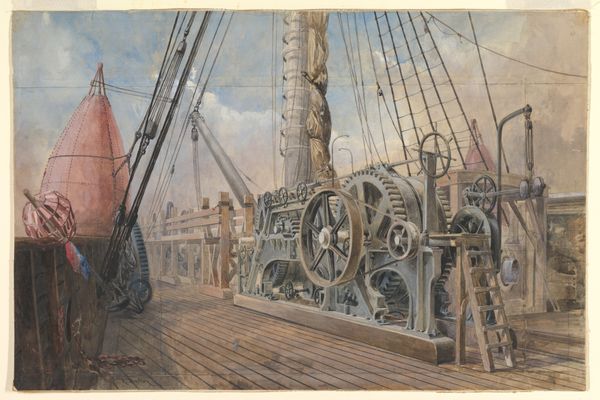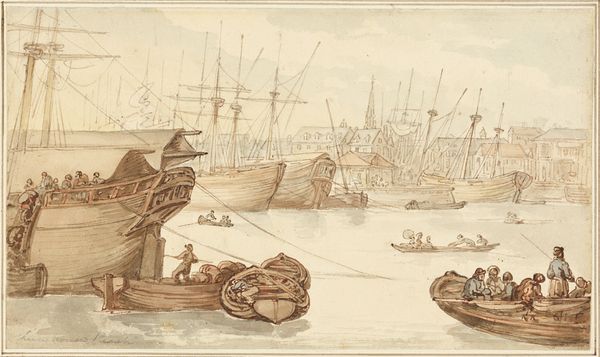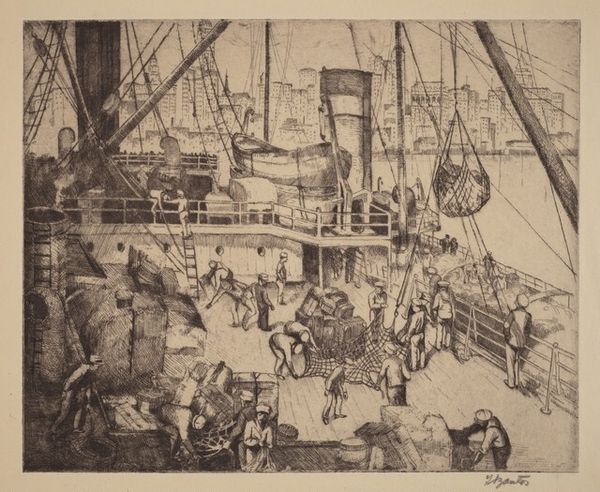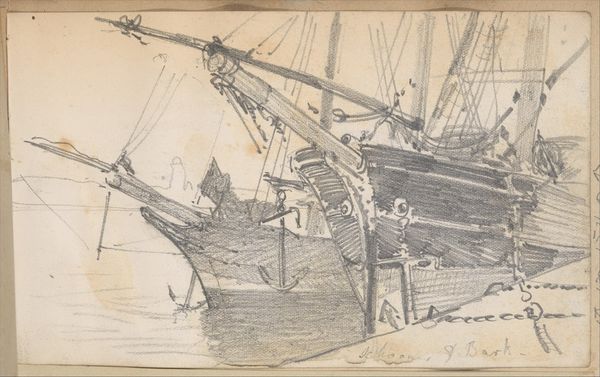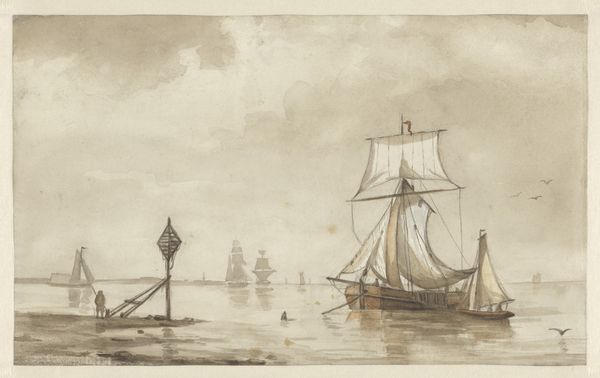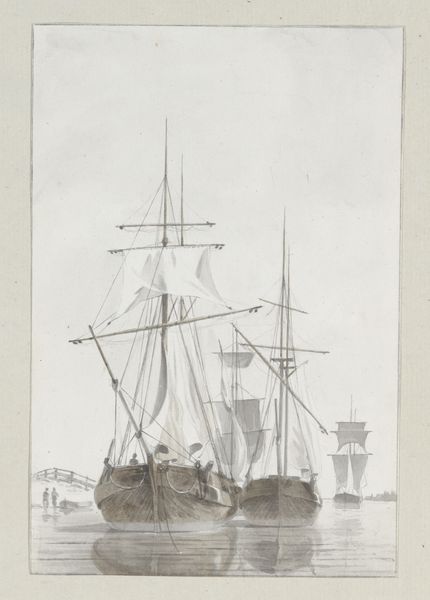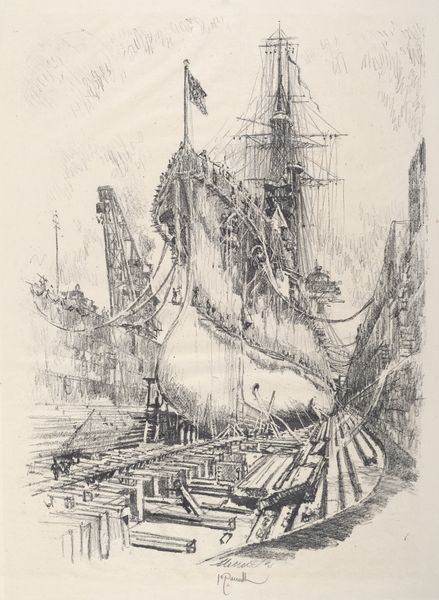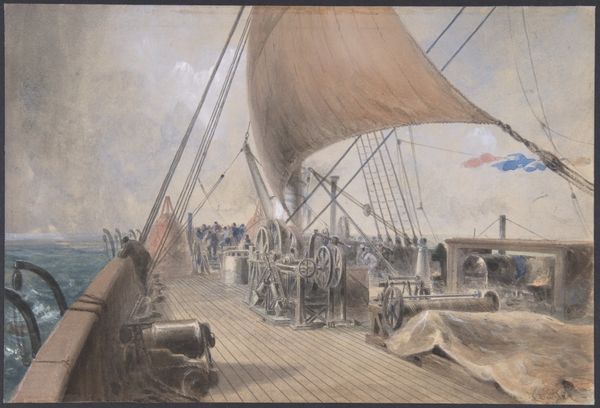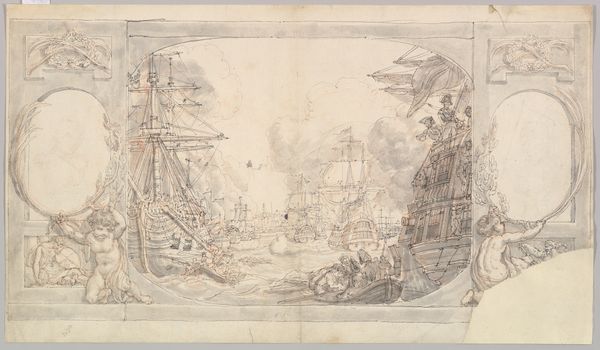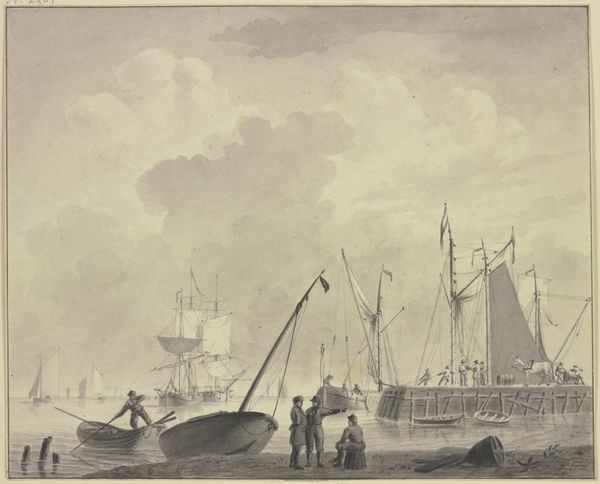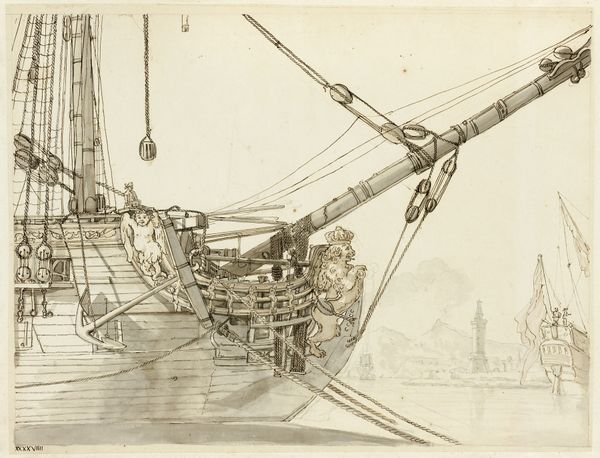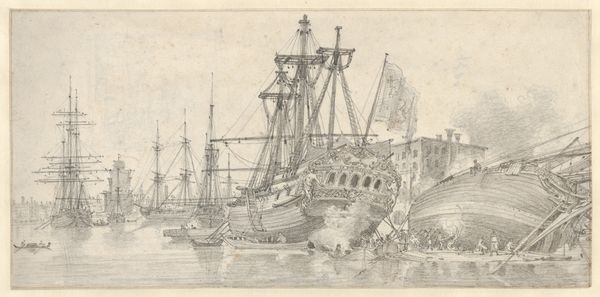
Getting Out One of the Great Buoys: The Deck of the Great Eastern Looking From the Forecastle 1865 - 1866
0:00
0:00
Dimensions: Sheet: 9 13/16 × 14 7/16 in. (25 × 36.7 cm)
Copyright: Public Domain
Curator: Robert Charles Dudley’s work, titled "Getting Out One of the Great Buoys: The Deck of the Great Eastern Looking From the Forecastle," created between 1865 and 1866. Dudley employs pencil, watercolor and coloured pencil drawing and printmaking, which are on display here at the Metropolitan Museum of Art. Editor: The first thing that strikes me is the immense scale captured in this seemingly mundane activity; the watercolor evokes both the grand industrial era and the grimy realities of labor. The overall tonal palette in creams, beiges and grays certainly lend a hand to that as well. Curator: Absolutely. Look closely at how Dudley structures the composition. The rigging lines crisscross, creating dynamic vectors that draw the eye upward, while the repetitive cylindrical forms of the masts and buoys provide a rhythmic visual anchor. This structured interplay is further contrasted with looser, impressionistic marks that bring energy to the composition. Editor: That's fascinating, but I can’t help but view the image through a critical lens. "The Great Eastern" was a symbol of Victorian ambition, a machine that facilitated global expansion. Dudley depicts laborers, presumably working-class men, rendered small against the vastness of the ship. What does this say about power, about exploitation? It could almost be viewed as critical Romanticism; harkening to nature with technological progress moving in a linear fashion. Curator: The Romantic inclination is also demonstrated in the rendering of sky and water - the sublime and awe-inspiring is a prominent aesthetic approach within the movement. Moreover, Dudley's use of perspective enhances that contrast. The deck stretches towards a distant horizon, making the ship feel boundless, which subtly reinforces both its industrial might and, conversely, the individuals whose labors enable this. Editor: Precisely. It invites reflection. On a historical perspective it serves as both record and critique of the burgeoning steam age, and its simultaneous promises and pitfalls. Thank you for pointing to its intrinsic properties! Curator: Indeed, by isolating the formal strategies at play, one begins to truly appreciate the artwork’s powerful dynamism - how an image functions regardless of what the artist “intended”.
Comments
No comments
Be the first to comment and join the conversation on the ultimate creative platform.
